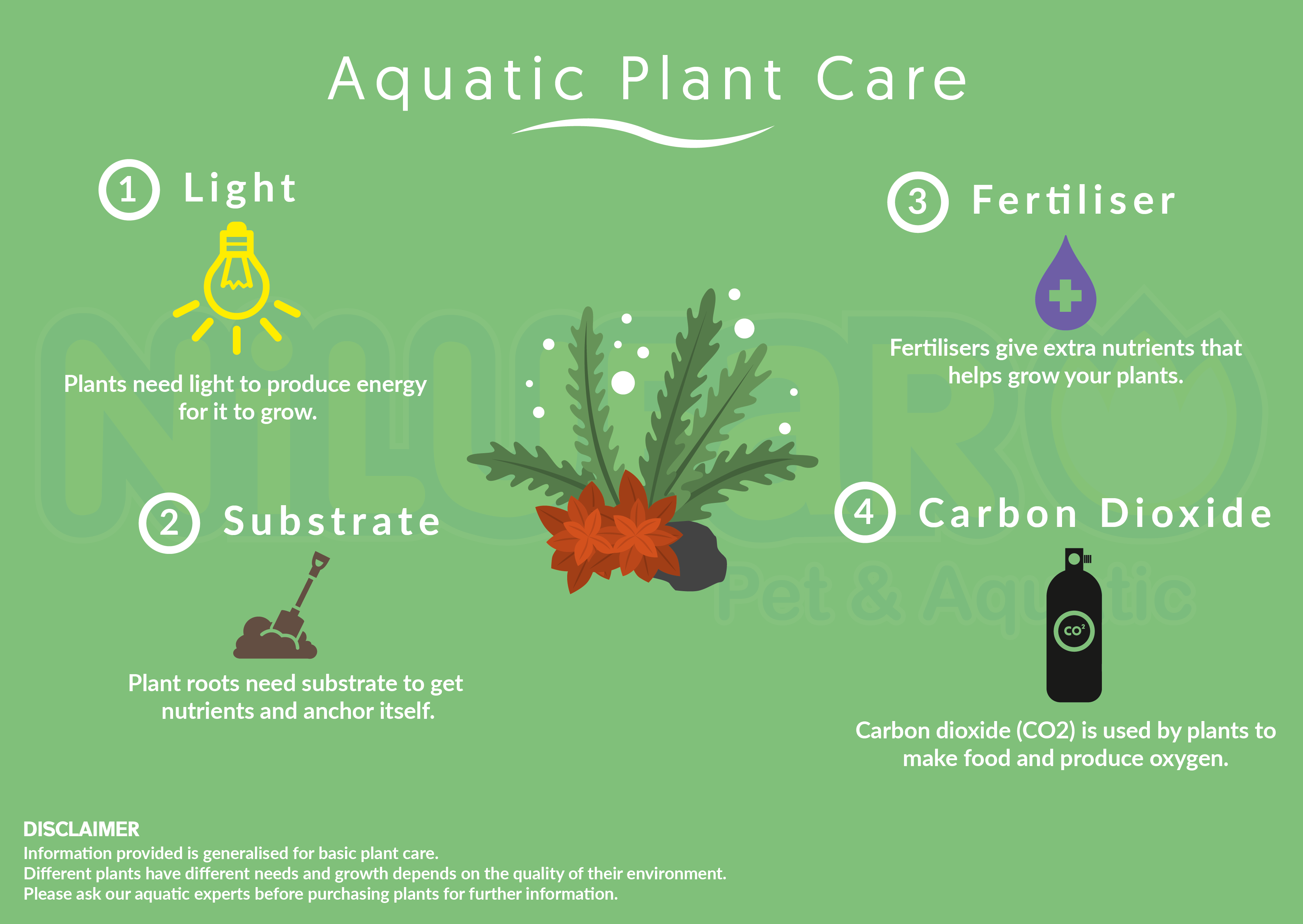Just like the fish in your aquarium, the plants are also living things in the aquarium that requires attention and care. Keeping plants strong and healthy is beneficial to keep the ecosystem in your aquarium stable.
Plants help produce oxygen for your fish, reduce algae growth, provide protection for small fish, build a natural habitat, and improve biological and chemical filtration.
Here are some basic components for successful growth and care for your aquatic plants:
Lights

Every plant requires light for photosynthesis. Photosynthesis is the process where plants produce their own food for survival. Too little or no light will cause the plant to either die or have physical defects. Different plant species require different amounts of light. For example, the Java Fern requires less light to grow compared to Rotala Macrandra ‘Dwarf’. A good rule to follow for how powerful your lighting should be for your aquarium is 2 – 5 watts per gallon or per 4 litres.
Note that there are different light temperatures for different aquarium set-ups. Look for LED lights that are specified or mention plant growth on their labels. Be sure to keep your lights on for 8 hours or less as to not promote algae growth.
Substrate

Substrates like soil are very important for plants to anchor itself in the aquarium and to provide beneficial nutrients to the roots. Besides soil, substrates like gravel and sand can also be used for plant growth when prepared properly.
Aquarium soil looks natural and is a great way of holding and providing nutrients for plants. It is recommended to add root tabs into the soil to provide additional nutrients when the nutrients in the soil run out.
Other substrates like sand and gravel are inert and do not hold many nutrients for plants, but is useful as a cosmetic addition to an aquarium. They are easier to manage compared to soil and mostly do not change water parameters.
Fertilisers

Fertilisers provide food for aquarium plants to help them grow. There are many different elements used in fertilisers for different situations (more about different fertiliser elements).
Fertilisers come in different forms. There are liquid-based, root tabs, and powders, which all have their places in the aquarium. Note that when adding fertilisers, it is not recommended to overdose as it can lead to algae growth as extra nutrients that are not used by plants will be used by algae to grow. Read labels on the packaging to determine how much you should add to your aquarium. The dosage depends on the number of plants, type of plants, and the tank size.
Fertilisers should be added along with strong lighting and CO2 supply. Fertilisers are the food that plants use to grow. Plants that require a lot of lighting and CO2 needs more fertilisers to help maintain its health. With that, dose accordingly based on the number of plants you have.
Carbon Dioxide (CO2)

Plants in the aquarium need dissolved Carbon Dioxide (CO2) for photosynthesis. The CO2 gas is diffused into the water through a diffuser in order to allow plants to absorb it. Adding CO2 in the aquarium is beneficial for plants to grow faster and also start producing oxygen. All plants benefit from CO2, even low maintenance plants that require little to no CO2 to grow can benefit from it greatly.
CO2 levels in the aquarium should be monitored as too much can cause an oxygen decline and can eventually suffocate and kill all live animals in the aquarium. In addition to that, CO2 can also change the pH in an aquarium as it is an acidic gas.
These are the general components for caring for the plants in your aquarium. Conduct your own research on what your plants need as different needs can vary between each person based on experience, environmental factors, and aquarium set-up.

